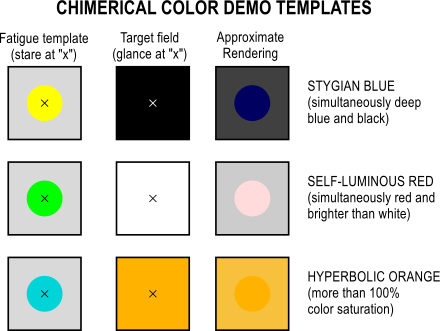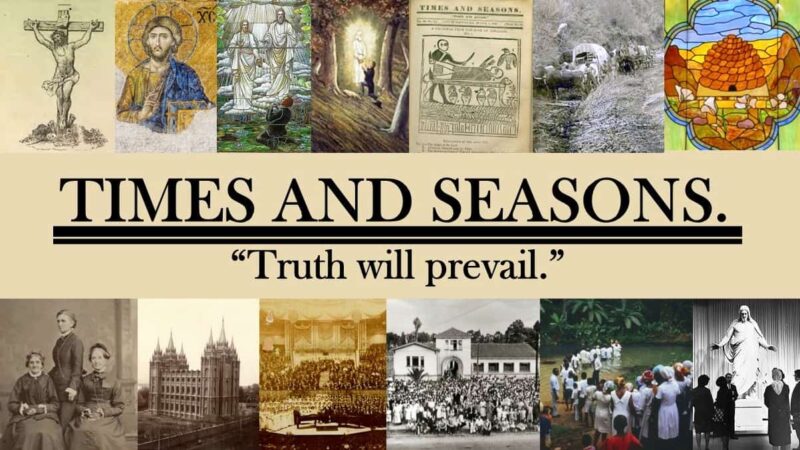
It was a whiteness beyond anything earthly I had ever seen; nor do I believe that any earthly thing could be made to appear so exceedingly white and brilliant.
The visit of Moroni to Joseph Smith provided one of those so-rare glimpses into the aetherial beyond when Joseph Smith tried to describe Moroni with the quote above, and I’ve always been a little curious about what it could have meant exactly. So, for your occasional dose of a harmless but not very useful mystery speculation, two possibilities if we assume the validity of the claim:
- He was describing something that we’d see today in a special effects studio. The kind of brilliant shiny white we sometimes see in movies isn’t something that would be producible with the resources of 19th century upstate New York farmer, and would fit Joseph Smith’s description.
- He experienced what is called an impossible color. These are colors that human beings are not typically capable of seeing and have no first person experience with. There is a history of speculation about this kind of thing, with one of the earliest American science fiction short stories (“The Damned Thing”) involving a fight with a monster that is an unseeable color. In a sense I suppose anything not on the color spectrum fits this bill (e.g. ultraviolet), but it’s actually possible to induce eye fatigue in such a way that you can see “impossible colors,” more specifically self-luminous and “hyperbolic colors” that are, for example, more orange than the purest traditional orange. (See link above for details). If God can see across the the entire electromagnetic spectrum (and who knows, maybe into other spectrums, electromagnetism is only one of four known forces in the universe after all) in the same way we have the subjective internal experience of green, then a God’s-eye view is more colorful, beautiful, and dynamic than we can literally comprehend.
Note: The name of the blogpost is plagiarized from the title of the moving film by Iranian director Majid Majidi. It has little to do with the OP, but IMHO it is one of the greatest religious films ever and you should all go see it.

Comments
5 responses to “The Color of Paradise”
This brings to mind vantablack, although it would be the opposite in some sense. It is the darkest man-made material, and absorbs 99.96% of all light that hits it. I’ve only seen videos, but it looks unreal.
“The Color of Outer Darkness”
Octarine!
I will echo that The Color of Paradise is an absolutely outstanding film. It is a human film, with genuine human emotion.
Color vision is complicated. The eye can’t actually measure the frequency (color) of light; the brain has to deduce it from the information it gets. It’s not hard to come up with elements of Joseph Smith’s experience that could mess with that process and lead to “impossible colors.”
The frequencies of light that an object emits also depends on the nature of the light that’s illuminating it, but the brain tries to correct for that so objects don’t change colors all the time. Remember “The Dress”? What color you saw depended on what kind of lighting your brain assumed was illuminating it when the picture was taken. There weren’t many options for artificial light in Joseph Smith’s day, and they generally had a distinct color. Just seeing a bright and truly white light source at night would have been extraordinary, and Joseph’s brain may have processed that as an extraordinary (but not impossible) white color.
More impossible colors in literature: The Color Out of Space by H.P. Lovecraft.